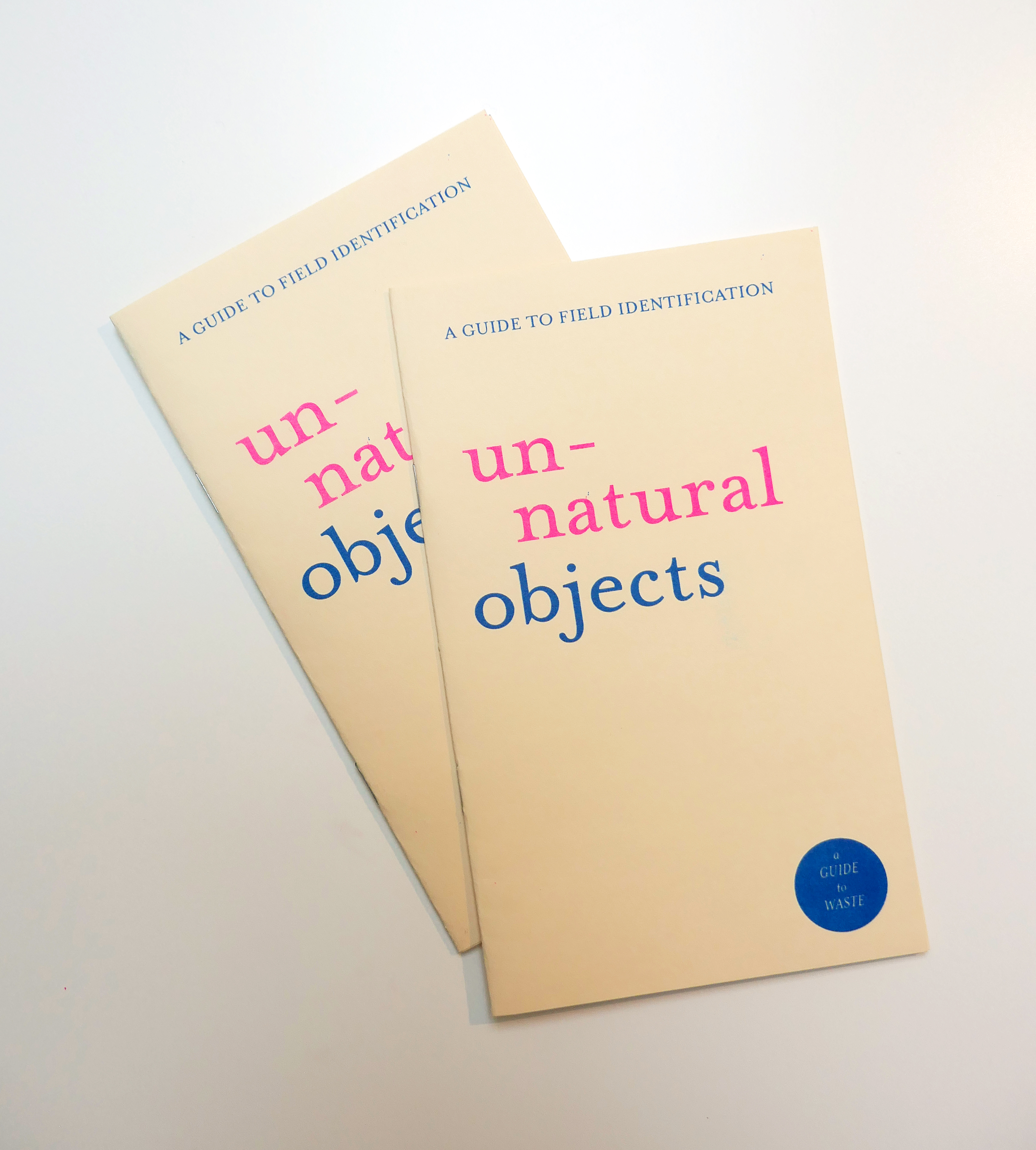

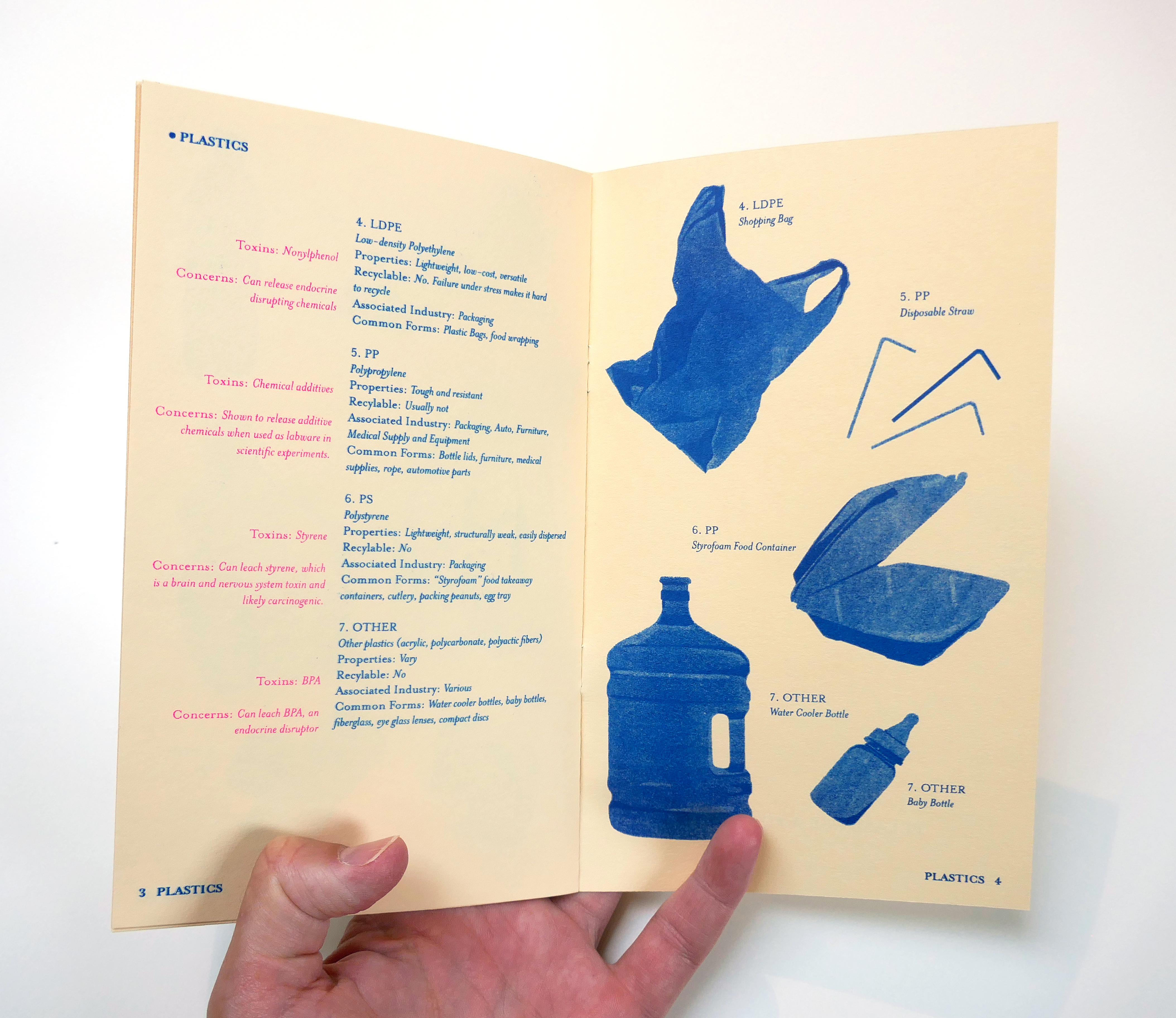
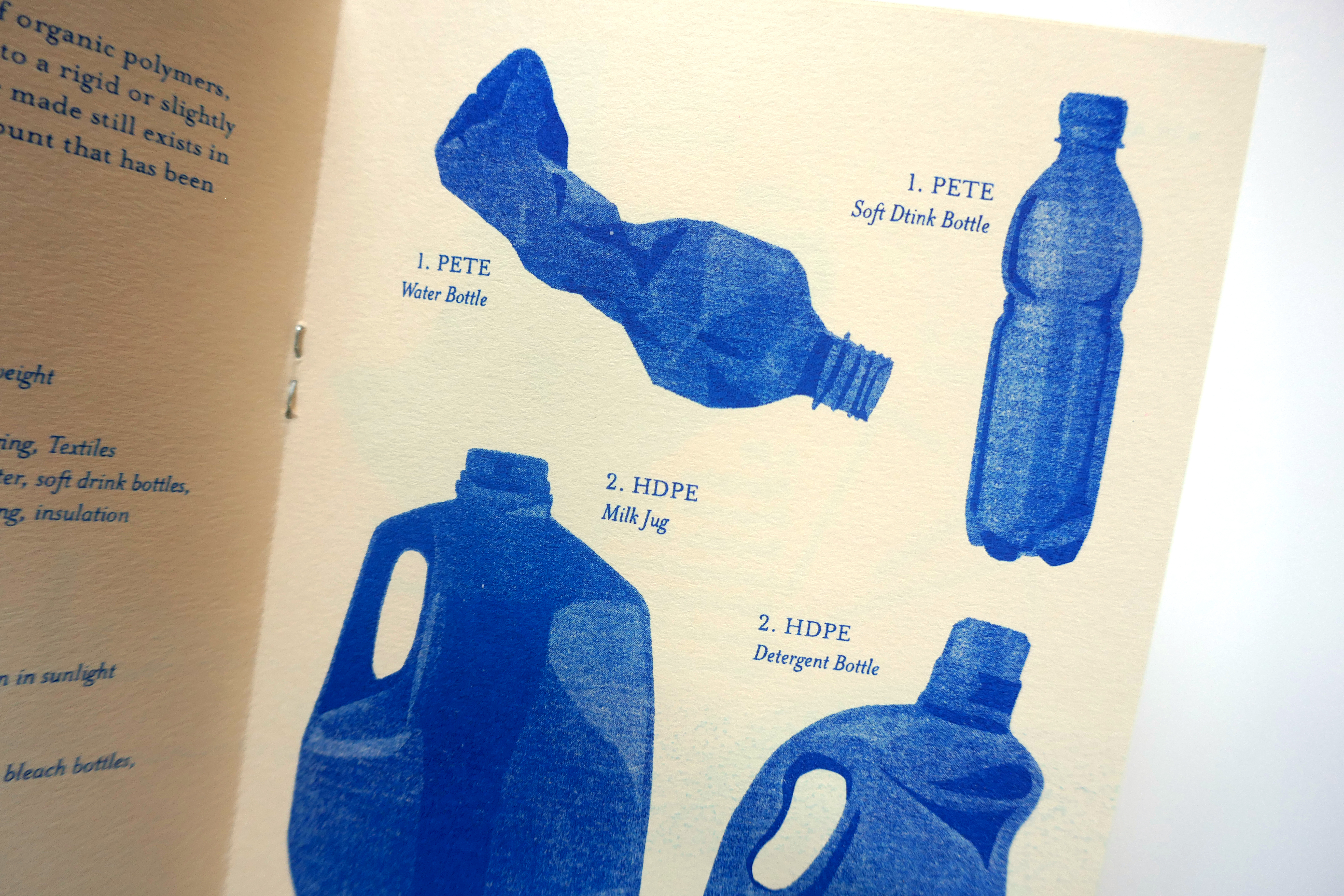

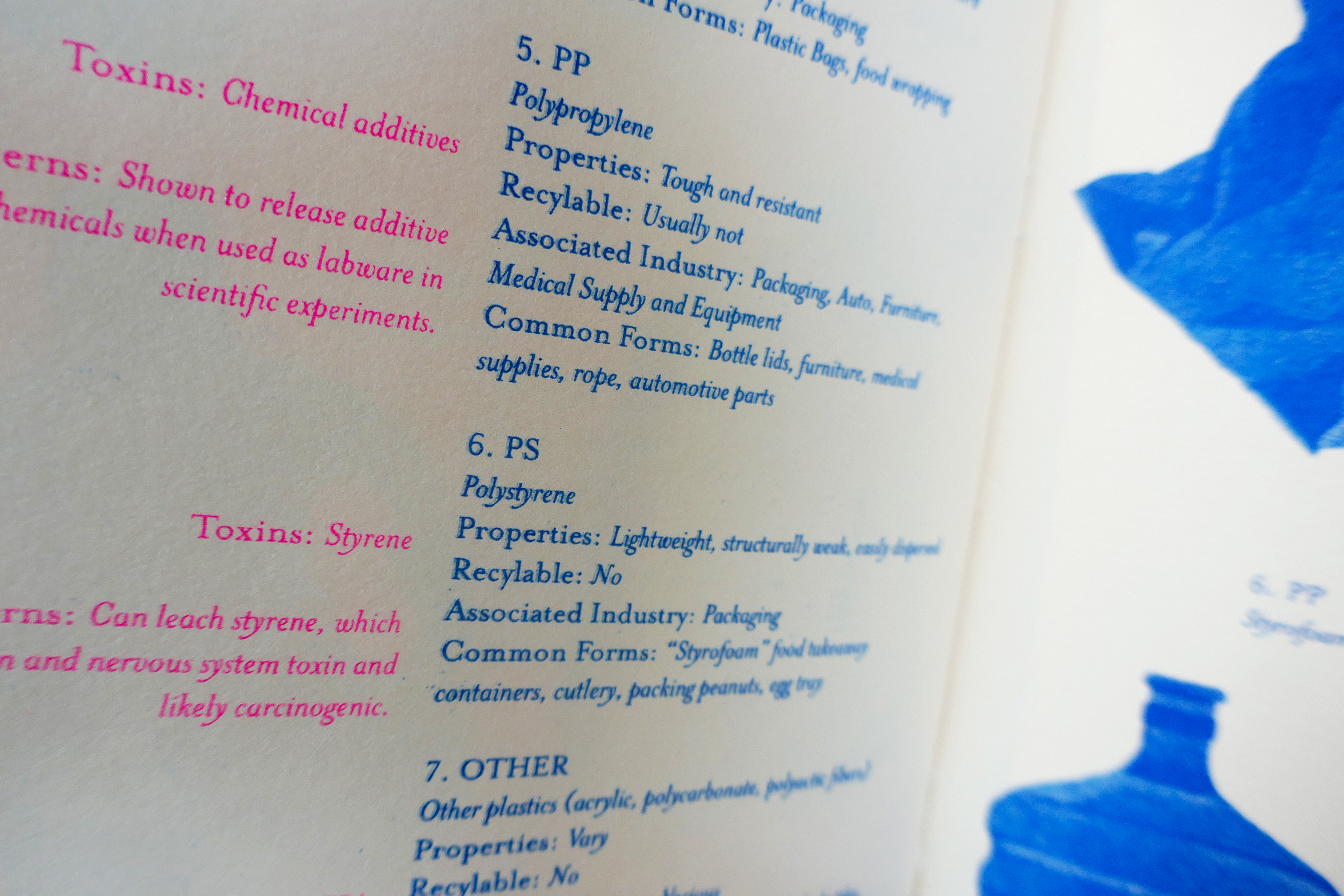
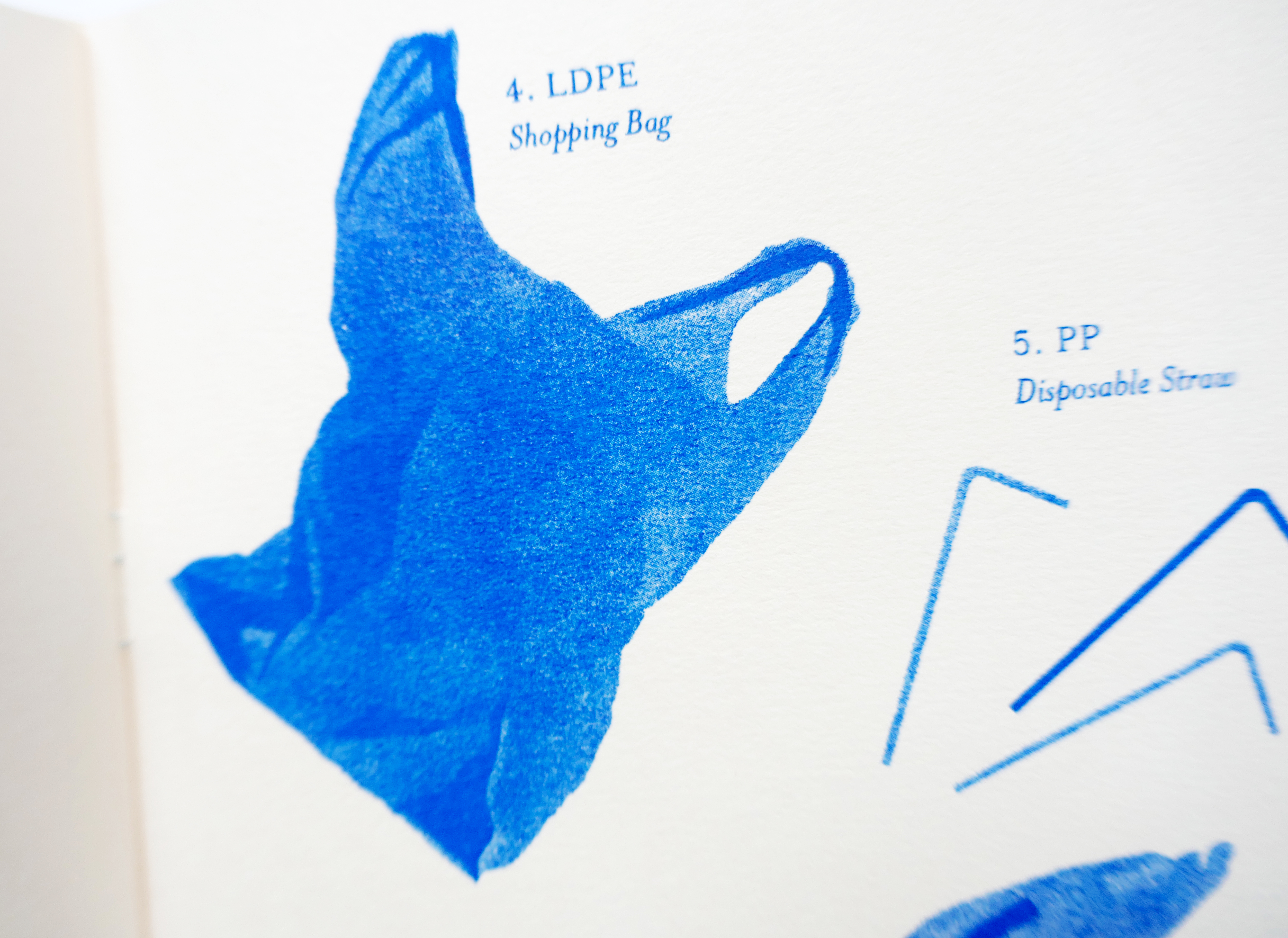
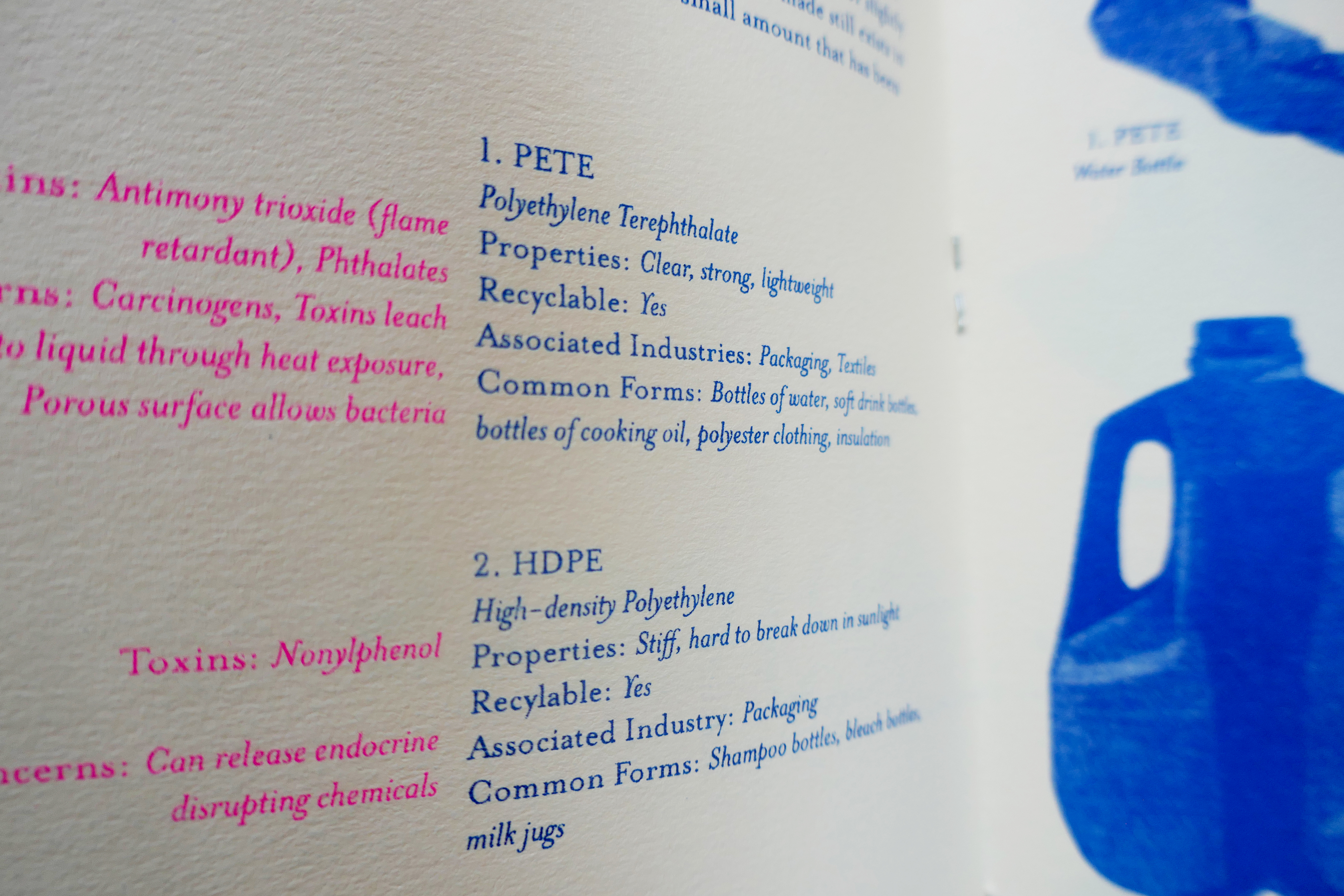
Field Guide to Un-natural Objects, 2 color riso booklet, 2018.
Field Guide to Un-natural Objects
I find the obsessive, exhaustive visual documentation and organization of a subject to be really fascinating. Particularly in the example of the field guide, it also serves as a framework of how to observe, understand, and participate in your immediate environment. I chose this framework as the basis for an information design project in order to explore more deeply and investigate in another context. When using a field guide, it is the image of something, the shape and form, that opens a window onto its greater significance: its name, its story, its history. This project was meant to encourage a conscious examination of the substances that surround us and infiltrate our daily lives.
In this project, I have used the language and form of a field guide to examine something unnatural, in this instance, the variety of different plastics that we share our environment with. Nearly every plastic humans have created is still here, whether in visible form or microscopic particle. This field guide is meant to capture the absurdity of sharing space with these objects, which can be visually observed, and also to inform about the dangers they pose. To me, plastics are intertwined with deeply wasteful, capitalist ideals: purchased, used, disposed of rapidly...Completely at odds with sustainability. Using the field guide, I am commenting on how these objects surround us and aren’t leaving any time soon. The fluorescent color and mechanical process corresponded to the unnatural, man-made material contained within the guide, the pink highlighting particularly harmful elements.